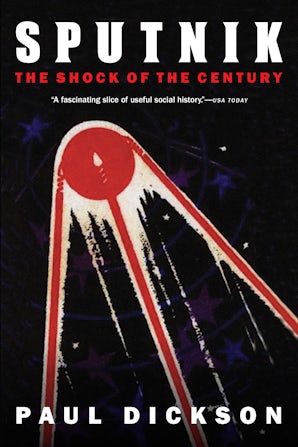“A fascinating slice of useful social history.”—USA Today
“Captures the excitement and angst of the dawning of the Space Age.”—Dallas Morning News
“A terrific book.”—Bulletin of Atomic Scientists
“Paul Dickson’s indefatigable research and reportorial lucidity have given us a fascinating history of the event that forever changed our world.”—Walter Cronkite
“Entertaining, admirably straightforward.”—Wilson Quarterly
“[Dickson’s] research is painstaking, his attention to detail exemplary. . . . It flows smoothly and clearly—an admirable quality in writing.”—Philadelphia Inquirer
“An ominous foreign presence suddenly seems to take control of the skies—‘Another Pearl Harbor!’ some shout. Initial fears are replaced by a determination to meet the challenge, and America declares that life has changed forever. Sounds familiar, but the transforming event of Paul Dickson’s book is not the crash of hijacked airliners [on] September 11; it is the Soviet Union’s launch in October 1957 of Sputnik.”—Washington Post Book World
“A superbly detailed account of the people and events that first took us off the surface of the Earth.”—Col. Chris Hadfield, Canadian Space Agency Astronaut
“American arrogance, trumped by the Soviet surprise, led to an unparalleled time of national flagellation and self-doubt. Out of it all came the triumph of Apollo as American determination and spirit responded to the wake-up call of Sputnik. This book vividly reminded me of the powerful events that led me from an impressionable kid to an Apollo 9 astronaut.”—Rusty Schweickart, Apollo 9 astronaut
“Space exploration is often portrayed as a U.S.-U.S.S.R. race, with the Soviet Union winning the initial lap by launching Sputnik, the earth's first artificial satellite. Yet as Dickson reveals, for the United States, the race was also an internal competition, with the military (particularly Wernher von Braun’s rocket team) and the Eisenhower administration grappling for control of the national space program. Eisenhower, who sought to demilitarize space and thereby open the skies to U.S. espionage satellites, eventually triumphed, establishing NASA as a civilian agency and successfully testing a clandestine satellite launch.”—Library Journal
